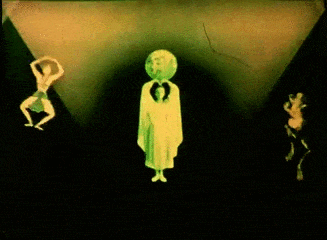
‘Harry Smith’s early films, known as Films #1-5 , 7 and 10 or Early Abstractions (or “the batiked films” as Smith was later to refer to them) were mainly made with Smith’s own elaborate technique of painting directly onto 35mm film, using a batik-like technique utilising stencils, tape, cutouts and layers of paint, dyes, ink and petroleum jelly. These amazing works were similar to Len Lye’s expressionist films but incorporating mystical elements of Native American art and encoded alchemical imagery. The films were re-edited, reprojected, and refilmed countless times resulting in work of great density and complexity.
‘All of Smith’s films seemed to be in a state of permanent reworking and re-editing through most of his life, and are therefore quite difficult to date. A film shown at a festival in 1947 may be very different from the version that is viewed today for example, and Smith did not seem unduly concerned with the conventions of giving his films “official” titles, dates and running times.
‘Harry Smith was, among other things, an enigmatic animator, painter, bohemian and magician, plus a curator of Native American culture and early American folk and pop music. In fact, producing major works in different disciplines (and having a common name) has meant that people reading about Harry Smith’s paintings may have no idea he is also the animator Harry Smith, or that he is the same Harry Smith who curated seminal compilations of rare folk music. Described by Kenneth Anger as “The Worlds Greatest Magician”, this was apparently another of his talents; Smith was said to have helped many people (such as Oskar Fischinger’s wife) with his spells, for instance. His frequent use of bizarre occult magic included leaving containers of his semen in the auditorium of his screenings to “absorb audience energy”. His incredible personal collections of objects included 30,000 Ukrainian Easter eggs and thousands of paper planes found randomly on the streets.
‘Harry Smith’s life story has been so mythologised, not least by Smith himself, that it’s hard to get a grip on the truth. His family were highly unconventional and encouraged his interest in philosophy, alternative religion and the occult. Smith claimed his father gave him a blacksmith shop when he was twelve and told him to try and convert lead into gold. As a teenager he would often sleep at the Indian reservation where his mother worked as a teacher and make recordings of Native American music and rituals. The story goes that Smith dropped out of college in 1944 after smoking grass and attending a Woodie Guthrie concert, moved to San Francisco for a bohemian lifestyle and never looked back.
‘Contrary to popular belief, however, “bohemian” isn’t necessarily a byword for inactivity. Not only having produced some of the twentieth century’s most remarkable abstract animation and being credited as a big influence in 1960s psychedelia, Smith is also famous for archiving and putting together one of the most important collections of folk and outsider music which, in its released form, became a huge influence on future musicians like Bob Dylan and Led Zeppelin. Similar to Len Lye in that he drew on his childhood connection with “primitive” American Indian art, Smith also associated with, and was influenced by, California-based artists including the great avant-garde pioneer Oskar Fischinger, an émigré from pre-war Germany.
‘Although said to be generous with what little money he had, Smith by his own choice lived for much of his life “as a bum” with no income, relying on benefactors and scrounging bits of money here and there which he would invariably spend on books, music, alcohol or other recreational substances rather than conventional necessities like food or rent. In short Smith was a maverick free spirit and his unique, freeform and often mesmerizing animation is as uncategorisable as the man himself.
‘While in San Francisco Smith studying painting he teamed with and fellow student Jordan Belson to organise some film screenings called Art in Cinema, which aimed to show all the greatest abstract and avant-garde films made to date. Smith traveled to Los Angeles to ask Oskar Fischinger and other avant-garde pioneers like John and James Whitney to be involved. Inspired by the brilliant Fischinger and also the films of Len Lye and Norman McLaren painted directly onto film stock, Smith and Belson began making films of their own. Having no equipment or money, Smith was helped by photographer and experimental film maker Hy Hirsh, using ink given to him by the Whitney brothers.
‘Smith’s early films were often made as a visual response to the great Jazz artists of the time such as Dizzy Gillespie, Charlie Parker, Thelonious Monk and Chet Baker. Later, Smith would screen this work in the nightclubs of San Francisco where these same musicians would in return create their music in response to the films. Smith’s working methods, enhanced by various intoxicants, are said to have been a form of Synesthesia, the phenomenon of overlapping senses, such as seeing sounds as colours and of images triggering internal sensations of sound.
‘Harry Smith’s most famous work came in 1960, the mysterious spiritual cut out epic Film #12 (or, as named by fellow abstract film-maker and friend Jonas Mekas, Heaven and Earth Magic). The film seems to have been made between 1950 and 1960. During this process Smith often used sleep deprivation as a gateway to spirituality and the subconscious, a process of falling asleep, awaking and resuming work continuously next to his camera. In Smith’s words this was “to make the whole thing automatic…some kind of universal process was directing these so-called arbitrary processes”. Smith gave a typically mysterious summary of the narrative as follows: “The first part depicts the heroine’s toothache consequent to the loss of a very valuable watermelon, her dentistry and transportation to heaven. Next follows an elaborate exposition of the heavenly land, in terms of Israel and Montreal. The second part depicts the return to Earth from being eaten by Max Müller on the day Edward VII dedicated the Great Sewer of London.”
‘According to Smith, the original of Heaven and Earth Magic was made on on 35mm film with a running time of six hours, although if this version existed it now seems lost. What survives is an hour-long 16mm edit, in which for long periods small cutout figures, white against black, jerkily manipulate a variety of cutout or real symbolic objects. If the visuals in this disappoint compared to the richness of Smith’s early work, what should be remembered is that the film was designed to be enhanced with colour filters, lights, music and sound effects manipulated by Smith along with framing masks that transformed the screen itself to appropriate symbolic shapes. This would give the overall feel of an elaborate Victorian magic lantern theatre embellishing an animated shadow play. Also integrated into many of its legendary screenings was a whole other theatre of activity with Smith often letting off fireworks, giving a running “stream of consciousness” commentary, while fending off hecklers and scorning members of the audience who weren’t sufficiently appreciative.
‘After this Smith would spend years developing a variety of even more ambitious film projects. Spending much of the 1960s trying to complete his unique mystical animated version of The Wizard of Oz entitled Film #13: Oz aka The Magic Mushroom People of Oz, Smith at first raised a budget (he later claimed to be a million and a half dollars) from a group of patrons and set up a large expensive film studio with a huge elaborate animation stand. After a year Smith had produced only nine minutes of usable film and when in 1962 one of the main financiers died of a drugs overdose, the others pulled the plug. Smith was locked out of the studio and most of the work was destroyed. What remains was edited with other material to form subsequent films. The first part of Film #16: Oz – The Tin Woodsman’s Dream for instance shows glimpses of the stunning film that never was.
‘Film #18: Mahogony took Smith another ten years and was based on the start of Bertolt Brecht and Kurt Weil’s opera Aufstieg und Fall der Stadt Mahagonny. Smith took Manhattan as his version of the “Mahogony City” in the story, a parable in which “everything is permitted and poverty is the only sin”. Smith intended to create a new film language that would be equally understandable to all people on earth, by using his visual symbols to connect to a collective, spiritual subconscious. He used live-action and animation and filmed many scenes in The Chelsea Hotel where he lived, featuring friends like Allen Ginsberg, Jonas Mekas and Patti Smith as well as the random homeless people he befriended, as they came to visit.
‘In 1992 Harry Smith died of cardiac arrest in this legendary hotel, singing in his friend Paola Igliori’s arms. Poet and writer Igliori later made American Magus (2001), a documentary about Smith’s life. Smith was certainly one of the most legendary counter-cultural figures of the twentieth century and, if fellow abstract animator, artist and adventurer Len Lye was once said to be “the worlds least boring man”, then Smith must have run him a very close second.’ — Stephen Cavalier
____
Stills
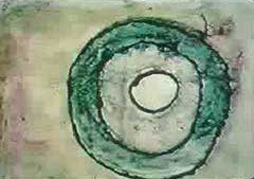
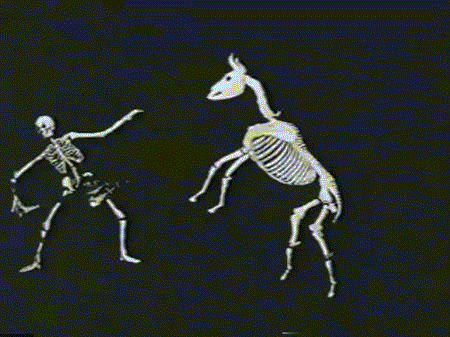

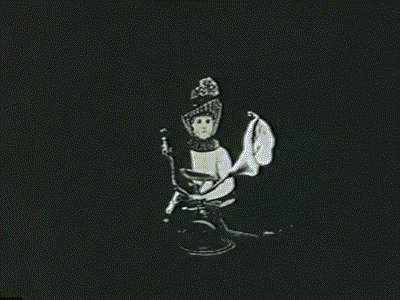

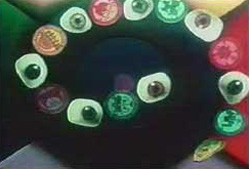

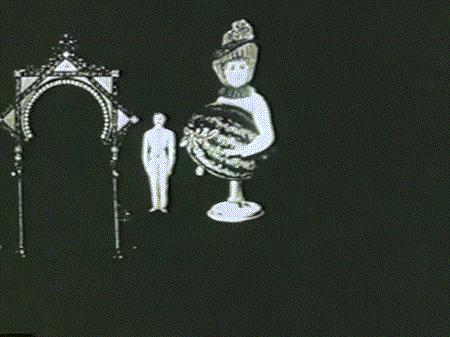
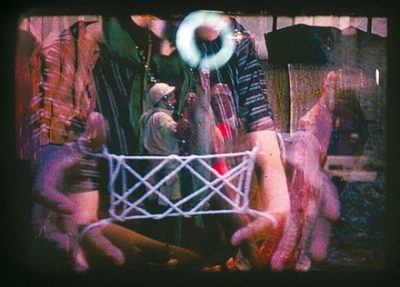
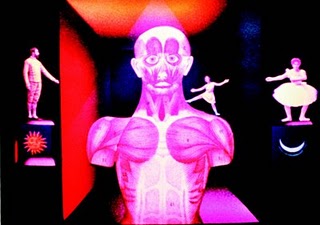
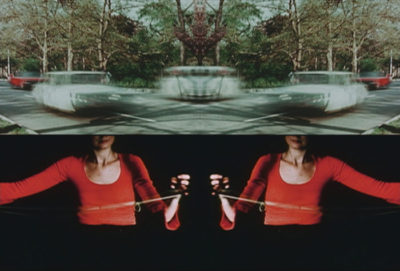


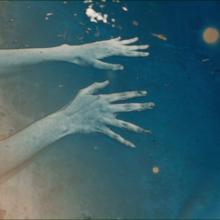

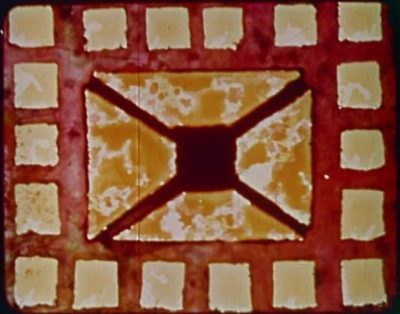






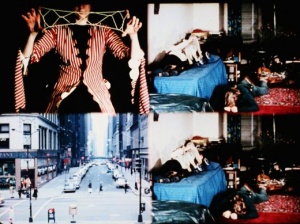

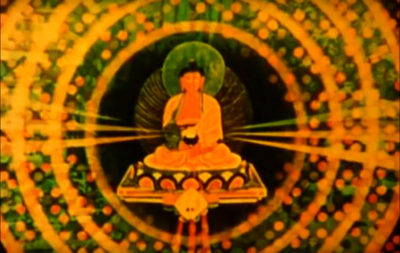

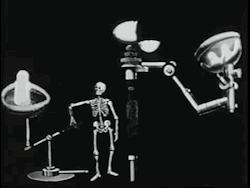
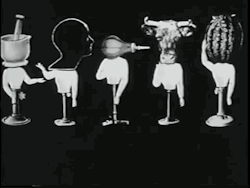

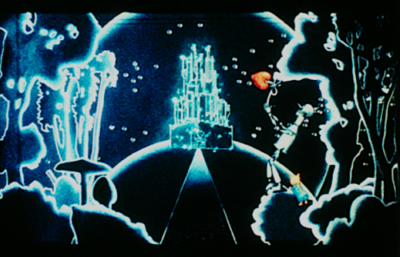

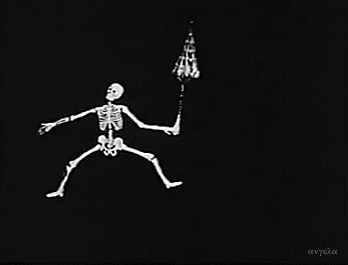




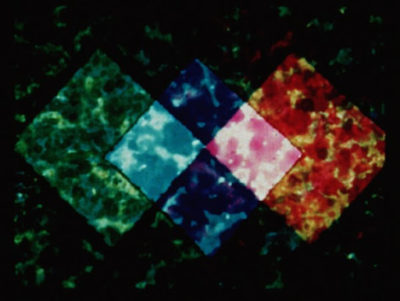
___
Further
Harry Smith Archives
The Collage of Perception: William S. Burroughs & Harry Everett Smith
Between Fact and Friction: Hanging Out in the Ozone with HARRY SMITH
Harry Smith Fan Page @ Facebook
Book: Think of the Self Speaking: Selected Interviews by Harry Everett Smith
A Thick Description of Harry Smith
A Harry Smith Seance
Summer Flowers
Strange dreams
Harry Smith @ Instagram
The Offbeat Paper Airplane Collection of the Brilliant Beat Era Artist Harry Everett Smith
HARRY EVERETT SMITH: JACK OF ODD TRADES
harry smith: the avant-garde in the american vernacular
Memorial Day – Harry Smith’s Birthday
____
Extras
Interview with Harry Smith and P. Adams Sitney (1965)
Harry Smith – BOY AM I IN TROUBLE
Personal Affects of Harry Everett Smith
____
Interview: Jonas Mekas on Harry Smith
by Kevin Arrow
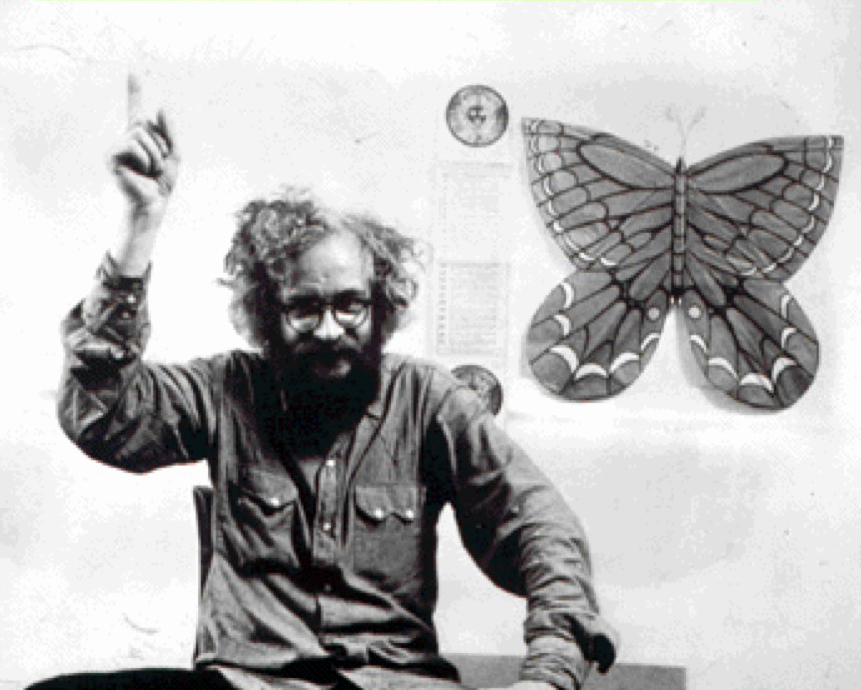
While in New York, I met with Jonas Mekas, the ninety-three-year-old filmmaker and founder of the Anthology Film Archives at his studio in Brooklyn to discuss Smith, Mahagonny, and the scene surrounding Smith at the time. Mekas has been watching films, writing about films, making films, and living films for longer that you can imagine. He was living and breathing and filming in the midst of the Velvet Underground’s first appearance, Judith Malina and Julian Beck’s Living Theater,the birth of Fluxus, Andy Warhol’s Factory, John and Yoko’s bed-in for peace, Cunningham, Cage, and Kerouac. It was as the founder of the Filmmaker’s Co-Op and Anthology Film Archives that Mekas first encountered Smith. He was once asked about their first meeting and, as I recall from the account in the book American Magus Harry Smith: A Modern Alchemist, Mekas described it as something like this:
Harry Smith walked in—I had never met him before, this was in 1962—I thought that he was sixty or seventy years old. ’I am Harry Smith and I hate you!’ he said. I said,’Harry, you don’t know me—do you know what it means? You are saying that you hate somebody?’ And I looked straight at him and said again, ’You know what you are saying?’ He looked at me, turned around, and walked out.
Smith proved himself to be irresistible to Mekas for the remainder of his life. Harry Smith practiced magic. I sat down with Mekas to discuss all this further.
KEVIN ARROW (MIAMI RAIL): The whole idea of Marcel Duchamp, mathematics, and The Large Glass sideswipes everything—I was trying to wrap my head around Brecht and Weill and was then trying to decipher the Duchamp reference and I don’t even know where to begin.
JONAS MEKAS: That’s Harry! That film is pure Harry. Don’t ask me about meanings!
RAIL: Did Harry ever say much about his films after they were made?
MEKAS: Whatever he had to say is in the Filmmaker’s Cooperative Handbook, he wrote the film capsules and didn’t talk much about his films.
RAIL: Is it true that people may have been intimidated to organize events with him to show his films?
MEKAS: He refused to go. I don’t know a single case when he would have accepted to appear after a film, but his room was always full of friends at the Chelsea Hotel.
RAIL: So he was good in informal sessions—would impart his knowledge to people?
MEKAS: No, he wouldn’t talk much, he would usually just insult them — he was not lecturing. He was a man of few words and would easily snap. They are a few recorded interviews with P. Adams Sitney. He also wrote a lot and he left behind a lot of scribbles.
RAIL: Regarding the film restoration project, who instigated the process?
MEKAS: The Anthology Film Archive has all his films, we are the only ones doing it, and not everything is preserved, because of money limitations.
RAIL: Apparently the right date and time and combination of factors arose and investors appeared?
MEKAS: Yes, but unfortunately they did not want to spend money preserving the individual films [of Mahagonny]. They wanted to put it onto one film, which was the wrong idea, but it’s OK.
RAIL: Are there additional films out there awaiting this same kind of a treatment?
MEKAS: They are all preserved except for the original materials for Mahagonny, we would need close to one hundred thousand dollars to do that.
RAIL: It does seem as if someone ought to do a frame-by-frame analysis of Mahagonny, if that is even possible.
MEKAS: Yes, that is the future.
RAIL: There is a 16 mm print of Early Abstractions in the Miami Dade Public Library, which I have watched countless times, and I have the Mystic Fire VHS tape as well. I am fascinated by themethods Smith employed to screen these films publically, in which he used slide projectors and was manipulating the images with crystals…
MEKAS: And colored gels.
RAIL: I understand that he used large lantern slides, some of which are reproduced in the book Experimental Animation Origins of New Art, by Robert Russett and Cecile Starr.
MEKAS: Yes, that projection instrument machine Harry destroyed. He made it himself. It was a contraption that you could take apart and put together and place a projector inside of and there was another place for different sized and shaped gels, and as you project you could do all those tricks. This was made especially for the film Heaven and Earth Magic (1962). Not for Early Abstractions, which was always shown straight, with no manipulation.
RAIL: I have Heaven and Earth Magic as released by Mystic Fire on VHS and it’s only in black and white. So when Smith presented this live, there were colored passages?
MEKAS: Yes. And you know, his paintings have yet to been seen and exhibited. We are currently trying to build a library, performance space, and a Heaven and Earth Cafe on the roof of the Anthology Film Archives. It will be for books, periodicals, and documentation and a lot of Harry’s art and paintings.
RAIL: So this is material that didn’t go to the Getty?
MEKAS: Most of his materials that have to do with music are at the Getty, and someof the paintings that came from individuals, but most of his paintings he left with me, which I deposited at the Anthology, but since we are not a museum and cannot care for them, we are selling them to build the library. We have forty Smith paintings, which we are selling for ten million dollars, which I consider to be the cost of one second-rate Warhol! With forty paintings from Harry Smith, we will build the library and the café, because we are really suffering right now and half of our paper materials are in boxes and we have more coming in, and since we are operating on a deficit, the café will help us break even, at least. So, I am forced to sell the paintings to build the library. The paintings have to be purchased and kept together–some foundation should buy them and deposit them in a well-established museum.
RAIL: I often tell people that Harry is the most important twentieth-century artist that you have never heard of.
MEKAS: Some people who know Harry’s work, like Henry Geldzahler, at the Metropolitan Museum of Art, he thought he was a much more important artist than Warhol, as a painter.
RAIL: I am sure Harry would have something to say about time cycles and that there needed to be this much time to pass before people would wake up and pay attention.
MEKAS: That is exactly what Henry told me, that he has to die and then people will eventually understand his work and he will be evaluated in the right way.
_______________
13 of Harry Smith’s 20 films
_______________
Early Abstractions (1946 – 1957)
‘The seven films that make up Early Abstractions are spliced together to be projected as a unit. “My movies are made by God; I am just the medium for them.” Harry Smith “Smith’s films can be watched for pure color enjoyment, or for motion – Harry Smith’s films never stop moving – or you can watch them for hidden and symbolic meanings, alchemical signs.’ — Jonas Mekas
the entirety
________________
A Strange Dream (1946 – 1948)
‘Hand-painted 35 mm stock photographed in 16 mm, color, silent, 2:20 or 5 min. Initially intended to be screened with and synchronized to Dizzy Gillespie’s Manteca or Guarachi Guaro. “…the history of the geologic period reduced to orgasm length.”’ — letterboxd
the entirety
_______________
No. 2: Message From the Sun (1941)
‘Hand-painted 35 mm stock photographed in 16 mm, color, 2:15 or 10 min. Initially intended to be screened with and synchronized to Dizzy Gillespie’s Algo Bueno. This film “takes place either inside the sun or in… Switzerland” according to Smith. To produce this film he used a technique that involved cutting stickers of the type used to reinforce the holes in 3-ring binder paper. These were applied to 16 mm movie film and used like a stencil. Layers of vaseline and paint were used to color each frame in this manner. The effect is hypnotic, psychedelic and is something like a visual music.’
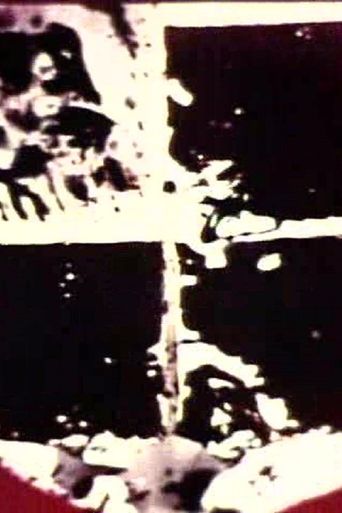
_______________
No. 3: Interwoven (1947-49)
‘ Set to the music of Dizzy Gillespie, the film dances and bounces with jazzy rhythms, vaguely jiving to the same beat as the Gillespie tune but more just pulsating in sympathy with the music. The animation is geometric and colorful, with multicolored geometric shapes — mostly squares and rectangles, though a few circles and triangles show up towards the end of the brief short — shifting around the screen. Often, the quadrilaterals are arranged in tight grids, the internal boundaries of which are constantly shifting so that any given quadrant could pulse in size from a tiny box to spanning across nearly a quarter of the frame. These grids seem to be bouncing to their own internal groove, like there’s a rowdy party going on and the whole place is jumping to the beat.
‘It gives the impression of architecture in motion, the boundaries all temporary, the straight lines deceptive because nothing ever stays in place for long — whereas most grids give the impression of rigidity and formality, this grid is fluid and free. Like jazz itself, it’s structure in motion, structure with room for improvisation and movement, for unpredictability, for fun. It’s hard to imagine a better visual metaphor for the spirit of jazz, this tension between structure/rigidity and freedom/motion. When Smith’s shapes break out of the grid, dancing across the black space, momentarily suggesting bar graphs or rows of piano keys before returning to their abstract dance, it’s even more suggestive of total freedom, though that sense of structure is lost.’ — Only the Cinema
the entirety
________________
No. 4: Manteca (1947)
‘Silent though possibly intended to be screened with Dizzy Gillespie’s Manteca. The film starts with a color sequence showing Smith’s painting Manteca (ca. 1950) with which he tried to subjectively depict Gillespie’s song, every brushstroke representing a music note. The film concludes with black & white superimpositions.’
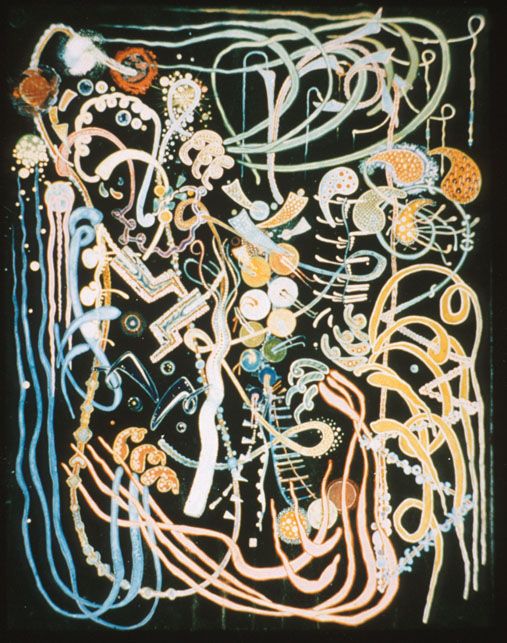
________________
No. 5: Circular Tensions (Homage to Oskar Fischinger) (1949 – 1950)
‘An experimental film from artist Harry Smith and part of his Number series of various animated scenes.’
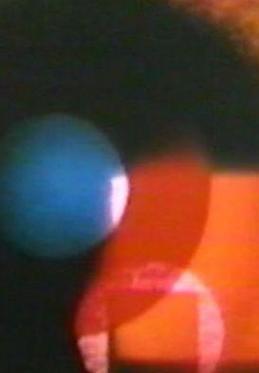
________________
No. 7: Color Study (1950 – 1952)
‘Optically printed Pythagoreanism in four movements supported on squares, circles, grillwork, and triangles with an interlude concerning an experiment.’

________________
No. 10: Mirror Animations (1957)
‘Film #10: Mirror Animations was included in his short film anthology *Early Abstractions*, which was selected in 2006 by the Library of Congress for preservation in the National Film Registry. While originally silent, Smith later used music by the Fugs (who were Smith’s friends) and the Beatles as the collection’s soundtrack; its video release in 1987 synced music from Teiji Ito (husband of another experimental filmmaker, Maya Deren), and more recent scores have been created by pianist/composer Philip Glass and the band Sonic Youth. Smith himself described *Film #10* as An exposition of Buddhism and the Kaballa in the form of a collage. The final scene shows Agaric mushrooms growing on the moon while the Hero and Heroine row by on a cerebrum. This soundtrack was created in July 2009 by the Shaking Ray Levis and Love, Execution Style. It was improvised and recorded in real-time, as the musicians viewed the film.’ — Shaking Ray Levi Society
the entirety
_________________
No. 11: Mirror Animations (1956 – 1957)
‘If, (as many suppose), the unseen world is the real world and the world of our senses but the transient symbols of the eternal unseen, ad limiting ourselves to the aesthetic experience’s well-known predilection for the eyes and ears, we could logically propose that any one projection of a film is variant from any other. This is particularly true of MIRROR ANIMATIONS. Although studies for this film were made in the early 1960s, the non-existence of suitable printing equipment until recently, my inability to locate the original camera footage until 1979, and particularity, the lack of an audience ready to evaluate L. Wittgenstein’s “Ethics and Aesthetics Are One and the Same”, in the light of H.C. Agrippa’s earlier, “there is no form of madness more dangerous than that arrived at by rational means’ have all contributed to delaying until now the availability of a print in the full mirror-reverse from originally envisioned. I hope you like it.’ — Harry Smith
the entirety
_______________
No. 12: Heaven and Earth Magic (1962)
‘Harry Smith describes Film #12 as follows, “The first part depicts the heroine’s toothache consequent to the loss of a very valuable watermelon, her dentistry and transportation to heaven. Next follows an elaborate exposition of the heavenly land, in terms of Israel, Montreal and the second part depicts the return to Earth from being eaten by Max Muller on the day Edward the Seventh dedicated the Great Sewer of London.” One of Smith’s most well-known works; this black and white collage film culled from cut-outs from nineteenth-century catalogues, the film traverses the landscape of an hermetic dream.’ — Harry Smith Archives
the entirety
_______________
No. 14: Late Superimpositions (1963 – 1965)
‘Superimposed photographs of Mr. Fleischman’s butcher shop in New York, and the Kiowa around Anadarko, Oklahoma–with Cognate Material. The strip is dark at the beginning and end, light in the middle, and is structured 122333221. I honor it the most of my films, otherwise a not very popular one before 1972. If the exciter lamp blows, play Bert Brecht’s Mahogany.’ — Harry Smith
the entirety
_______________
No. 16: Oz – The Tin Woodman’s Dream (1967)
‘Unfinished commercial adaptation of L. Frank Baum’s The Wonderful Wizard of Oz which was shelved after Smith’s close friend, the executive producer and primary financial backer Arthur Young died of cancer. From the reported three to six hours of camera test footage (rushes) only ca. 15 minutes, in the form of non-color-corrected rushes, is known to be extant. The only completed bit is The Approach to Emerald City, released under the current title.’ — HSA
the entirety
________________
No. 18: Mahagonny (1980)
‘Harry Smith’s final film; an epic four-screen projection. Smith worked on this cinematic transformation of Kurt Weill and Bertolt Brecht’s opera Rise and Fall of the City of Mahagonny (1929) for over ten years and considered it his magnum opus. The film was shot from 1970 to 1972 and edited for the next eight years. The “program” of the film is meticulous, with a complex structure and order. The Weill opera is transformed into a numerological and symbolic system. Images in the film are divided into categories— portraits, animation, symbols and nature— to form the palindrome P.A.S.A.N.A.S.A.P. The film contains invaluable cameos of important avant-garde figures such as Allen Ginsberg, Patti Smith, and Jonas Mekas, intercut with installation pieces from Robert Mapplethorpe’s studio, New York City landmarks of the era, and Smith’s visionary animation.’ — trakt.tv
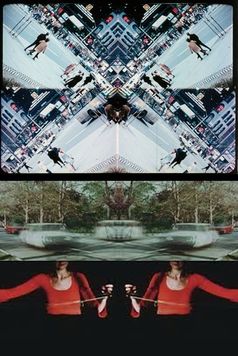
*
p.s. Hey. ** David Ehrenstein, Yes, RIP Mr. Connery. ** Dominik, Hi, Dominik! Good to see you, pal! My Halloween was only different than every other current day for me in that I watched, and mostly fast forwarded through, a bunch of horror movies. Maybe the quarantine seemed a little scarier yesterday, which is Halloween-like, I suppose. Did you celebrate in any appropriate manner? I guess the guinea pig funeral is something, and RIP to the no doubt sweet thing. Oh, excellent! About the happy outcome of the course and the big meeting and so on! Great, great! Let me know what results if you feel like it. I’m okay. The quarantine is a big drag, and I’m way stressed about the US election tomorrow, but, otherwise, I’m fine. That love you sent couldn’t be more welcome. Love that sets the table then hands you your ideal menu then returns with your perfectly prepared meal in 10 seconds, Dennis. ** h (now j and yours), Hi! Thank you, thank you! And a belated HH to you too! That sounds like a bit too much busyness even if any busyness sounds utopian to me at the moment. Oh, wow, yes, the Stephen Prina song! That was so cool that he did that. He’s an amazing artist, I love his work. Yeah, him doing that was a real joy. Thanks for finding and listening to and sharing it with me. ** Bill, Hi, Bill, It didn’t go so excitingly well, obviously, but thank you, and it wasn’t so bad in my head. Ha ha, yes, I had always wondered if one of these days I’d come across a master or slave that referenced my stuff. And I finally did. Given the very unliterary bent of the vast majority of guys on those sites, I suspect they thought he was referring to the main character in Monty Python’s ‘Life of Brian’. Oh, no, your TV! Fixable? Thank you very much for the two clips. I didn’t see them on Halloween, but I will re-Halloween up with their help. Enjoy, or at least get through, today. ** rigby, Rigby! My sight is significantly less sore now. Hi, buddy! I think your Halloween wins, or I guess your pre-Halloween. I’m all kind of achy from the vibes. Dude, make yourself at home should this place still feel like home. Big love from me. ** _Black_Acrylic, Hi. Like I said, finding that slave was quite a moment, yes. Obviously hoping your version of the lockdown unexpectedly does the trick and doesn’t just inflict isolation for nothing. Yay about the new episode! ** Q, Hello, Q! I’m very happy to meet you, and you thank for coming in here and for the kind words. I find the slaves on a handful of slave/master social media sites that are out there. I do various little tricks to disguise their identities and protect them. So they’re very hard to track down in their DC’s form, but they’re real. My Halloween was kind of a bust because we’re quarantined here. Where are you? How was yours? What’s up with you and yours? Have an excellent day! ** Steve Erickson, Oh, that’s too bad. It sounded so nice in theory. My day was blah other than a phase or trying mostly unsuccessfully to find a satisfying random horror movie on a free/illegal site. Which counts, I guess. Oops, the ‘being packed’ thing. As harsh as our lockdown is, I have to say that I do kind of think this is the way to go. It seems entirely possible that Frisk could see this post if he’s really a fan. If I hear from him elsewhere, I’ll let you know. ** Brown O’Connell, Whoa, you became Brown! Hi, Brown! That slave giving my stuff a shout out was definitely the Halloween peak for me. Your Halloween does sound nice, really nice to me. I do like ‘Lake Mungo’ a lot too, yeah. I just watched a bunch of random recent release ‘horror’ films, most of which I only got partway through before giving up. I don’t even remember their titles. Their titles were like if you fed the name of every horror movie into a computer and asked it to come up with a horror movie title. Yeah, I’m in borderline a panic about tomorrow. And the media seems to be doing everything possible to scare the shit out of us about what could happen, so what seemed like a relative, calming semi-certainty now seems like a 50/50 chance type of deal. Anyway, no sleep til Brooklyn aka Wednesday at the earliest. Things are fucked up here, for sure, and Macron is making things worse, but compared to over there where you are, we’re okay. Happy day, sir. ** Right. Harry Smith is known for a number of his talents, and maybe most well known for the composite albums of his field recordings of early/indigenous American music, but he was also an experimental filmmaker whose work got better and better as he went along and even as he made fewer and fewer films. Anyway, his films are well worth a look and absorption. So do, please. See you tomorrow.




 Now available in North America
Now available in North America 
Good morning Dennis, happy belated Halloween. How was your weekend? Get up to anything exciting? I saw a crazy clip on Twitter of anti-quarantine demonstrations in Spain, it’s pretty ominous. I wonder if people will start rioting and looting over here if we’re herded back into quarantine. Do you think people will lose their shit in France?
I hope you’re keeping your anxiety under control, and I hope the same for me. I’m feeling a lot less panicked about the review than I was last week. You’re right that these things come to pass, thanks for the reassurance. I’m about to hop in the shower and then head to work. It’s weird, I feel like I’m really getting my shit together for the first time in my life–never thought I had the stamina to hold down a 9 to 5, but I’m learning it’s actually not so hard. Maybe it helps that I’m sleeping at my boyfriend’s place. He likes to get up early anyway, he gets up at 5 am even on the weekends. It helps that he’s a bit of a quack, because I’m also a quack, so I don’t have to fear reproach when I let my guard down…Were you usually attracted to romances with like-minded guys, or did you prefer to go after opposites?
I’ve never heard of Harry Smith, thanks so much for the post. If we end up going back into quarantine I’m going to treat it as Quarantine 2.0–more bucket-list novels and films, more fiction writing, less phone and less bouts of agony and hopelessness. But I suppose you can never fully prepare for these sorts of things. Do you have any plans for the holidays? Hope you’re bundling up and thanks for the ongoing correspondence, I always love hearing back from you.
Hi!!
I’m sorry your home-bound Halloween wasn’t the greatest success… Apart from the little funeral, mine was fairly ordinary too. I watched a few true crime shows. I tried to find a horror film worthy of the occasion but everything I ran into seemed super tedious and I didn’t feel like wasting my time on them. Someone recommended The Haunting of Bly Manor and… well… it didn’t really meet my expectations either. At least the first two or three episodes I was willing to watch, anyway.
Are you in full lockdown mode again?
Thank you! I’ll definitely let you know how the meeting goes on Wednesday! It’d be really sweet to work for them ’til I find enough small publishers and maybe self-publishing authors to be able to work exclusively with fiction.
Ah, the love you sent is pretty perfect as I’ve been eating the same thing for the last three days and I’m getting a little bored, haha. 25-year-old trick or treater dressed as 15-year-old Bill Kaulitz love, D.
Harry Smith is without question one of the strangest characters in the history of everything. His American Folk Music scholarship formed the basis of the “Folkways” record label. His animated films speak for themselees. Then there were the films known asn “Late Superimpositions” whch were part of a planned, but never completed film adaptation of Brecht and Weill’s “The Rise and Fall of the City of Mahagonny.” On a personal level I always found Harry to be delightfully copasetic. He was also well known for the romantic spell he was able to cast over groeous we-ll-heeled college boys, Scads o f them turned up at screenings looking for Harry. I well recall one who pleaded with me “I’m not a homosexual, but I’m hooked on Harry’s blow-jobs!’ Wonder what ever became of him.
Dennis, Zombie selfie is in effect. Check your FB email. 😀
The party was…okay. Of course, most of the people there weren’t dressed up! And the two teens who went with us -both 13- well, there weren’t many kids there who were their age. Otherwise, it was a’ight. Lots of food, a huge bonfire, a lot of nice people to shoot the shit with.
So here’s a funny thing. The hosts had rented a port-a-potty so people could just go and didn’t have to keep going in and out of the house. I finally use it, and as I’m peeing, something doesn’t seem right. I turn on my phone flashlight and discover that the lid is down. I pissed all over the top of it and it splashed on my legs. Who the hell puts the lid down in a fucking port-a-potty?
On top of that, I ended up talking to this, um, very large woman who was…obviously into me? She kept hitting on me, asking me if I’d ever had sex (I’d joked that I was virgin earlier to someone else within her hearing distance), changed her clothes in front of me (another story), and then just kept on at the Misanthrope. Oy vey.
Went back to my friend’s house, and Deep Blue Sea 3 had arrived from Netflix. We watched that. Her husband and I both fell asleep, but she thought it was the greatest movie ever. (She’s the friend who likes ALL movies.) Got home at 1:30, fell back asleep at 4:30. Yikes.
I hope you were able to find a little fun on Halloween night. :'(
Hi Dennis. Most comment on recent posts I’ve lurked and been too sullen and corpse-like to respond as per usual. Jon Rafman is one of my favorite filmmakers. Kool-aid man, his dream journals, the sci fi short film he did… I love that Halloween post. Surprised how many of those I’ve seen already, lol. I guess when I was a bored teen, after I graduated early at 15.5 from my sobriety school, I spent a lot of time on the internet watching and listening to obscure stuff to stave the heavy ptsd depression.
Was hoping that instead of Michael Bay doing his exploitation thing that they’d give the makers of Birdemic 500 million dollars to do a remake of it. That would be the sole and only COVID film ever made. No more needed after that. Fuck it. So weird how capitalism took advantage of it that fast. Even the riots on racial injustice. I don’t own a TV, but five minutes of being in a room with one of those boxes on and seeing commercials, my head exploded. This is what people are absorbing aimlessly these days? I pray that people are more conscious than they really are, but then you think of Netflix addiction… Am I any better for using my publishers Criterion, though? At least I’m not torrenting as much.
Book isn’t out yet. It’s such a long fucking book, so it takes time to put something that enormous out. The grammar has been cleaned up as much as possible, without erasing some of the purposeful grammar errors. Layouts take a long time. I am patient though – not sure the audience is or is just excited from the online and zoom-read excerpts. There’s a small/cute online lit mag called Misery Tourism that does Zoom readings that people can sign up for, in which all of the 2 hour sessions are recorded as well. When the next one is uploaded, I’ll have to send it to you. My Grandma that I live with invited her conservative sister over, so it was too loud with them talking about Roe V Wade and other stupid shit. I had to have a friend of mine be a proxy and read an excerpt of the novel for me. It worked out perfectly. He’s younger and pulls off the emo haircut better than I do. Read it better than I ever would be able to do so.
Okay back to birdemic. Just watch this scene and imagine 500 million for it. – https://www.youtube.com/watch?v=LrxZblVUkMU
Of course it would be better for you to get that money so you can make more films as well. I showed Permanent Green Light to a friend and my publisher when I was visiting in NYC. Told them to look at it through the eyes of Haneke. Is that okay to have said to them ? Because I feel such a Haneke vibe from it. Maybe you mentioned it too, when you were giving the previews/inspo posts for the film.
Then I showed them this furry film called Rukus that a friend of mine made. Whether you’re into furries or not, it’s a good film despite being low budget, all of it is real stuff, too. https://vimeo.com/252230330
In case you didn’t know, I’m a furry, and yes, a guro admirer, yaoi admirer, all those ‘weird things’, socially unacceptable, gay neet otaku shut-in. Kindly recall a guro scene in your last book ( grin emoji).
Like I said, I know a few of these guro artists. As in, I chat with them. I’m in Discord groups with them. All my good friends aren’t writers – they’re depraved perverts like me. And a lot of the art you posted is shota too – risky to post!
As always –
Take care and stay safe as much as possible
Peace, with love,
~ Damien Ark
Please contact me about the CDs, DVDs, Books and posters I have for sale STAT! If you live in Los Angeles, please know I’ve taken every health precaution in dealing with other people (masks, social distancing, hand sanitizer)
I await your call.
Latest FaBlog: Don’t Hold Back, Keith — Tell Us What You Really Think
Thank you, DC, ever so much for this most worthy and well-accessorized tribute to Mr. Smith. I began grad school (in avant-garde film history @ Media Study, SUNY Buffalo) enthusiastic as Hell about Kenneth Anger’s Magick Lantern Cycle, but left school completely enamored of Mr. Smith’s work. If either book is still available, both ‘American Magus: Harry Smith’ (Inandout Press) and ‘Think Of The Self Speaking: Harry Smith – Selected Interviews’ (Elbow/Cityful Press) are essential reading. Again, you’re the best, Mr. C..
Woah Smith was quite the polymath, such an inspiring figure. Will have to turn my attic into a mini cinema venue this coming week.
I saw the new British horror film HIS HOUSE last night, and while it telegraphs its themes about the trauma of being a refugee in a way that’s very familiar in recent horror, it’s quite successful at creating a nightmarish, surreal atmosphere.
I wonder how tomorrow will feel: the end of a long nightmare or the start of a new uncertainty? The atmosphere in New York is weird – our weather is getting increasingly unpleasant, and I wound up eating indoors at a fairly busy restaurant today. I’m gonna try to avoid following election news after 8 PM or so, but this will probably be impossible to live up to. (I got a phone call from Alexandria Ocasio-Cortez’s recorded voice, telling me to vote, today!)
Smith’s hand-painted animations are stunning, although the magical symbolism passes me by.
Hey Dennis – A very quick note to say how much I enjoyed this Harry Smith day! My internet is blocking my ability to see Mahagonny unfortunately. That Wizard of Oz section is tantalizing — I wonder what happened to the rest of it?
Have seen Terrence Nance’s short films? They just popped up on Criterion and seem pretty amazing. Very playful and experimental, compressing pages of narrative into a few potent seconds.
This writing class is eating my life right now, along with election stress. Received sad news yesterday that my cousin died — a really sweet guy with a lot of demons. He was my age and I was hoping to see him next month.
Hope you’re doing okay — back in lockdown, is that right?
Hey Dennis,
Whoops! Contrary to what autocorrect says, I’m not actually going by “Brown” now, although I was never particularly big on “Brian” either if I’m being honest.
Harry Smith’s a new name to me too. These look like wonderful films, very visually stimulating and impressive. I confess that experimental film is a territory I’ve heretofore left largely unexplored, with several notable exceptions. Will have to rectify that, of course.
There is so much crap re: contemporary horror movies. I know what you mean about the random generic titles. I feel like Blumhouse is the most emblematic of that brand of plasticized trash, although I’m personally not a fan of the Warner Bros./James Wan/“Conjuring”-type stuff either. I mean, the A24 “art”-y stuff isn’t perfect (and is surrounded by an insufferable miasma of snobbishness), but it’s at least formally interesting some of the time. Certainly less cynically made.
Yes, the media is doing nothing to assuage our many anxieties about tomorrow, which is why I’m mostly steering clear of it. I think they’re concerned about totally dropping the ball with it like they did last time, but they’ve wound up overcompensating; the stress they’re generating is just too much. I’ve done my part already, so I’m avoiding all predictions and projections. Whatever happens in the next couple days happens, and we’ll react accordingly when it comes. I’m just going to try and relax on Tuesday, maybe temporarily quiet the ceaseless waves of numbing terror that seem to be the defining feature of this era’s political climate.
My highly uneventful day was mostly spent contemplating Pier Paolo Pasolini, who was murdered/possibly assassinated forty five years ago on this date. He’s one of the most important artists for me, as I think I may have mentioned. How was your Monday? Anything significant outside of the isolation claustrophobia? Happy day right back at you.
I’m familiar with Smith’s music projects, but not his films. Another gaping hole in my viewing that needs to be taken care of.
Hope you hear from Frisk!
The TV is probably kaput. I’ve been watching streams on my laptop, which surprisingly is not a terrible experience. Just saw this, which I enjoyed:
https://letterboxd.com/film/night-of-the-kings/
It’s a French production, so maybe it’s available in Paris? Steve liked it too.
Jeff, so sorry to hear about your cousin.
The big day is coming. I have Ativan ready.
Bill
Hi Dennis,
It’s Gus again. Really really glad you liked ‘Beat Boy’, that’s a very touching description you wrote! The response has been pretty good, though it does feel a bit diffuse not being able to play gigs really, especially when it’s the way I’d normally push this stuff, but people seem to be responding so that’s always nice. I was performing a lot before, I used to play synths and sequencers and stuff but the sound was always mixed so badly that I’ve ended up with pretty straight-forward live setup just doing vocals live over the laptop, but I have a pretty intense on stage energy lol!
I’m sure you can picture Canberra well with its LA similarities. I’m always fascinated with the idea of “America” that I feel must permeate everything there, though I wonder how much that’s just sold to me by US media. I’ve never actually been overseas, so I feel like I have a pretty bad perspective of what any other country feels like. Regardless, I’m sure you can get on with your life not visiting Canberra!
I have a question for you which may be way too expansive for a blog reply, so no problem if it’s too much! I’m applying to do a research masters in fine arts (basically a way to get paid to do a long-form project) and I’m able to make a text as my art but I’m thinking through the ideas of how, why and when a text is/can be an artwork. I understand histories of performances, text installations, concrete poetry, etc, but I’m trying to think of something like a novel. Maybe my thinking is around how that’s mass-produced and not site specific which flies quite boldly in the face of general understandings of fine art. I’ve also been drawn to the generative powers of fiction as a speculative mode. I’ve just ordered a few Travis Jeppensen books including ‘Bad Writing’ which should be helpful, but I thought you’d be a great person to ask. I’m actually putting a part in my application about the structuring ideas of the George Miles cycle, some of those diagrams/drawings for its form in ‘Wrong’ by Diarmuid Hester have been really exciting to see. I’ve especially been thinking about ‘Guide’ and the conceit that in the novels heart (which itself is the centre of the cycle) it contains a spell, which informs everything but is never revealed.
I’d happily send through the novel manuscript if you’d like, absolutely no pressure to ever read it or anything, but if it’s of interest it’s super easy to email through. It’d be my pleasure!
I hope November is treating you well.
Gus
Hello! I was wondering if you would be interested in receiving a copy of a tape by a noise project I did with Richard Ramirez called knife/tape/rope? Clearly, it was inspired by your work and I would love to send you a copy.